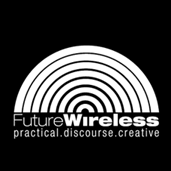
.programme
.background
.contributors
.visions
.links / resources
 |
.programme |
| .visions / adam hyde | |
|
Adam Hyde (bio)
|
Wireless began its life as a synonym for radio. However now the two are becoming cousins, related by a common physical phenomenon but now with distinct emergent identities. Since the advent of the internet Radio has been transformed. A web of binary data protocols has augmented the medium of 'air' for casting sound. Radio has been separated from its parent phenomenon (the electromagnetic spectrum) and its meaning has been constrained to describe the delivery of sound over distance. The casting medium has been hybridized, augmented, and replaced. Since the popularity of mp3 players (for example), the casting medium has become us. We download radio and deliver radio content to others through portable mp3 players and usb discs. People are now radios, we are becoming the medium. Addition to this transformation of the casting medium, it won't be long before radio must decide if it is just sound. The open source audio and video developments housed under the OGG (xiph.org) umbrella use a single file suffix for audio or video data : “.ogg” suggesting that there maybe no need for radio to identify itself as a sound-only media. Wireless is also now divorcing itself from sound. Its medium is the air, and it that way it is closer to its parent origin. However, its content is diversifying. The wireless is now used to tell us where we are, to sense others, and to allow us to communicate with others. The air is becoming an any-to-any media. The wireless is now a medium for casting binary information, an irony as continuous waves are utilsed to deliver the most concrete and basic building block of discrete data – the one and the zero. The analog wave is now a carrier for its digital anithesis. The medium is not the message, it is the carrier of another medium with another message. Interestingly the process of creating digital data
creates electromagnetic waves. Every electronic device we use creates
an electromagnetic field and the characteristics of these transmissions
are effected by the data we create. The remnants of our ideas are broadcast
as distinct fingerprints in the air. Whether our wireless imagination
is polluting a spectral environment we can't see or touch, an environment
that we usually only experience by hearing through the radio, is an interesting
question.
|